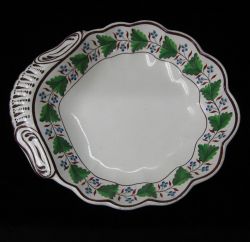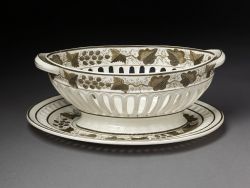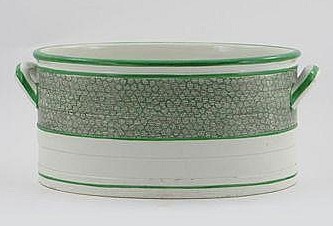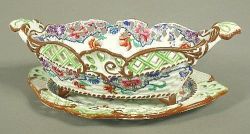- History
- Pottery
- Industry
Earthenware
When Josiah Spode I rented his first potworks in 1767 it was a fairly substantial factory. He may have continued to make white salt-glazed stoneware but he also produced the newly popular cream colored earthenware. Some time after 1775, when china glaze was introduced, he recognized its potential and added it to his repertoire.
Cream Colored earthenware | China Glaze or Pearlware |
Cream colored earthenware was developed in the 1740s by a Staffordshire potter name Enoch Booth. Later known as Queensware, collectors today know it as creamware. It was made principally from white clay and flint, similar to the mixture first developed for white salt-glazed stoneware. The lead used to glaze the body was naturally contaminated with iron which imparted a creamy tint to the glaze, giving it its descriptive name. Creamware was refined and improved until by the 1760s it was suitable for making fashionable, elegant tableware. | Pearlware is the collectors’ name for “china glaze.” Introduced in about 1775, china glaze was an attempt to whiten creamware and make it more like porcelain or china. Cobalt blue was added to the glaze mix, weakening the yellow iron tone and producing earthenware with a distinct gray-blue finish. This glaze was ideal for blue printed earthenware and potters continued to use it long after a clear, colorless glaze was possible in the early years of the 19th century. |
|
|






